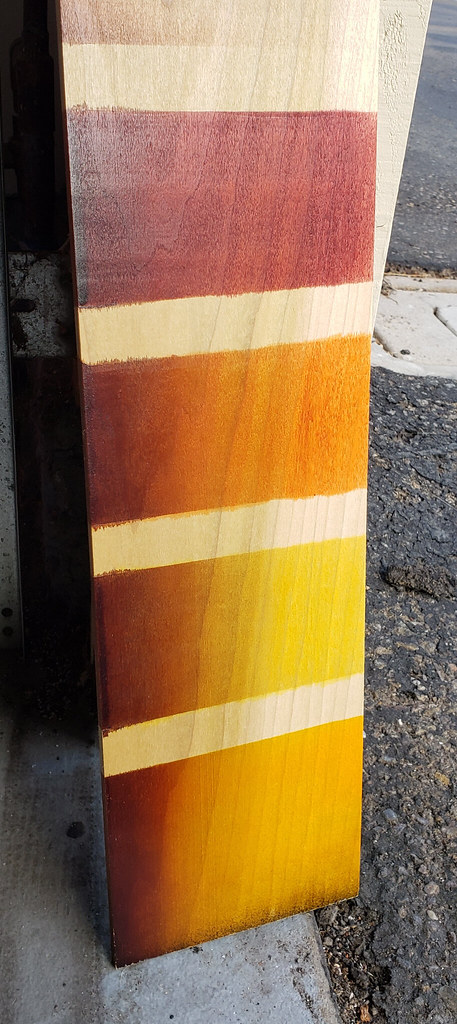memecode said:
Bagman67 said:
In my experience true dyes are hard to make look good on darker woods like mahogany and korina/limba because the lumber's natural color tends to muddy the dye's effect. I found that making a stain using a universal pigment in a vehicle of 50:50 lacquer thinner/lacquer retarder worked well on my green mahogany telecaster. Mixol Blue no. 9 pigment is a bright blue that leans toward teal/turquoise a little bit right out of the bottle, so adding a couple drops of and green and possibly white might get you there. The stuff is also cheap, at about $6/vial. A single vial mixed up as stain as described above can cover several bodies, so you can experiment a lot on scrap without worrying about using up all your product.
My experiments on mahogany with Transtint dye and Mixol pigment are here:
https://www.unofficialwarmoth.com/index.php?topic=16742.msg246207#msg246207
I've ordered some Mixol, Blue 9 and one of the greens. But a little unsure of the procedure to use it at this point. You mix it with lacquer thinner/lacquer retarder and then spray it on? Or wipe it on? And it then dries into the wood? What about the binding? Do I need to protect that? Or do I just scrape the colour off it?
Ah, sorry, I did not take binding into account. DO NOT USE LACQUER THINNER. It will melt your binding, even if you mask it. Seepage will make you swear a lot when you peel back the mask. You should use alcohol as a vehicle rather than lacquer thinner. The Mixol product is compatible with alcohol.
Your method for creating the stain is to squeeze a ML or so of pigment into a pint of vehicle (alcohol in this case). For safety's sake, and for repeatability, measure how much you use. Count the drops you squeeze into the alcohol. Be stingy with it to start so you don't overpower the grain pattern that you hope to have show through the pigment. You can always add more pigment. I would take your scrap and tape off squares or stripes to compare various strengths or multiple applications, like so. I mean, you can make whatever size divisions work for you, but make sure you write down what went on each one, and perhaps consider numbering the squares with a sharpie so you can keep track.
In an abundance of caution, I would mask the binding with automotive detail tape. An alcohol/pigment stain would likely not stain the binding, but why risk it? Once you're done you can use a utility knife blade or single-edged razor to scrape if there is indeed staining.
To apply: Take an old tshirt and cut out a rag about a foot square. Wad it up and wrap the wad in another piece of the tshirt, which you will then tie off with a rubber band. Result: A roughly spherical pad with a tail hanging off it. The technical term for this object is a "tampon."
Time to start applying stain now. You don't want to pool it, just wipe it on. On your scrap, you'll get an idea for how much you need in your tampon. You'll want to wipe it on generously enough that you don't wind up with lap marks. Work from wet into dry as you apply more. Let it dry for an hour to be on the safe side. Pure alcohol boils off fast, but you might as well give it a little time to be sure. Once it's dry, you're ready to proceed with sealing and topcoating.
Alternative method:
ALTERNATIVELY: You can seal the unstained body with shellac, clear vinyl sealer, or untinted lacquer sprayed through a Preval unit or from a rattle can, then apply pigmented lacquer with the Preval. Same story as the stain: Track how much pigment you put in, test on scrap, yadda yadda. Then top with clear lacquer via Preval, rattle-can, or spraygun.










